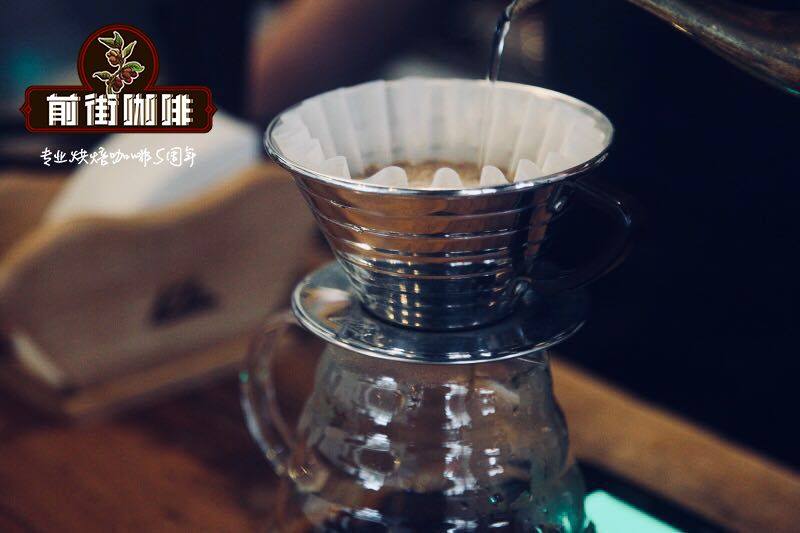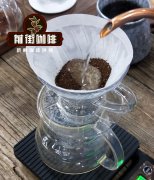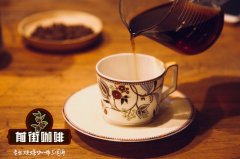How to choose the right filter cup for brewing coffee is very important.

Coffee filter cup-an important part of hand-brewed coffee
With the coming of the third wave of coffee and the popularity of single boutique coffee, trickle coffee, also commonly known as hand-brewed coffee, has become more and more popular in Japan. It is not difficult to enter the field of hand-brewed coffee. The instruments prepared are about hand-brewing pot, filter paper (metal filter mesh), filter cup and coffee powder. After introducing filter paper and hand-brewing pot, it has also become the protagonist of this article, filter cups of different shapes. Different coffee tastes.
Types of coffee filter cups
With the invention of coffee filter paper and filter cup at the beginning of the 20th century, after a hundred years of evolution and improvement, there are a variety of filter cups and filter paper on the market, not just in appearance. It also affects the flow rate and extraction time so that the taste of coffee is different under each kind of utensils.
Fan-shaped filter cup (trapezoidal filter cup, table-shaped filter cup)
The bottom of the fan is usually one hole, two holes, three holes, the flow rate is slow, so the coffee extraction time will be longer, we should pay attention to the use of filter paper and filter cup fit degree, if the filter paper will fit the lower hole, that may cause the flow rate is too slow to cause excessive extraction, coffee bitterness, so should choose to match rather than fully fit.
The design of this shape was designed together when Melitta Bentz made coffee filter paper in 1908. At first, it was a single-hole design, but later improvements led to the emergence of more holes. Several holes determine the flow rate, depending on the number of holes that each person needs for coffee.
Conical filter cup
In addition to the fan shape, nothing is most common in the market than the tapered filter cup. Most of the difference lies in the groove design of the cup body. The groove is the channel that allows the coffee extract to flow into the cup, so the design of the groove also affects the flow rate. For example, the KONO door groove recommended by many people is only half or less than half of the cup body, and the filter paper without the groove fits the cup body, resulting in a slow flow rate, which is suitable for coffee with a stronger taste. In addition, the recommended Hario V60 is the groove extending to the entire cup body, the flow rate is faster, and the coffee taste is brighter and cleaner, so it is a highly recommended coffee filter cup. Ji Shu also uses V60 in the Taiwan area handmade coffee final.
Wave filter cup (cake filter cup)
Wave filter cup is the patent of KALITA, the filter paper used together is like the crease of cupcake paper, also known as cake filter cup, but Wave is used in English, or more people call him wave filter cup, using the crease of filter paper to replace the backflow groove, because the area of touching the cup body is small, so that coffee powder can be extracted evenly, which is recommended by both beginners and players. In recent years, wave filter cups are often seen in hand coffee competitions, and the reason why the market share is not so high is that wave filter paper is more expensive, each sheet is about twice that of ordinary filter paper, which is also a small disadvantage.
Metal filter cup
The metal material can retain the grease, layers and Body of the coffee more than the paper filter paper; the coffee considered by the paper filter paper is cleaner and brighter. The advantage of metal material is that it can continue to be used as long as it is cleaned, while the obvious disadvantage is that the fine powder of coffee is easy to be washed into the coffee, causing coffee powder to precipitate at the bottom of the cup, and if the degree is serious, it will affect the taste of the whole cup of coffee. To solve this problem, you need a fine powder filter to make the coffee purer.
Material difference of filter cup
The material difference lies in the specific heat, ceramic, resin, plastic, stainless steel, metal and so on, which is the effect of locking temperature, such as the production of ceramics is thicker, the temperature control effect is better than plastic, and the temperature maintenance effect is better when extracting coffee. If you feel that the coffee tastes bitter or tasteless because you have changed the material, you may have to adjust the water temperature to practice the sweet spot with the equipment.
The material will also affect the price. If you want to make a good cup of coffee, you need to know the equipment and practice more. It does not mean that the more expensive, the better. Let's practice more!
HARIO V60
Design
Designed by Japanese veteran brand HARIO, this V60 is related to his appearance, belongs to V-shape and has an angle of 60 degrees, with spiral grooves and versions of resin, glass, plastic, metal and ceramics. Designed from 2005, this V60 has an overwhelming place in the market.
Advantages
With V60 special filter paper, it is lighter and thinner than other filter paper, and it will not have too much paper smell, its spiral groove speeds up the flow rate, and the large mouth at the bottom of the cup will not let the coffee be over-extracted. other styles deposited below are easy to cause over-extraction. V60 is ideal for clear, fruity, fruity or floral coffee, such as coffee from Kenya, Costa Rica and El Salvador.
KONO MEIMON famous family
Design
Founded in 1925, Carlton Coffee Co., Ltd. is one of the most famous coffee brands in Japan. Like HARIO and KALITA, today's coffee utensils come into being only through constant revision and improvement. It is possible that some years later, the current way of brewing coffee has updated utensils. KONO Mingmen uses siphon-like extraction of coffee. It is also the first company to use a tapered filter cup. The taste of extracted coffee is more concentrated alcohol.
Advantages
KONO has 12 grooves like V60, but it does not extend to the whole cup, so there is more time for coffee powder to be extracted. When the flow rate is not as fast as V60, we should pay attention to whether the extracted coffee is too bitter. This is also the reason why V60 is recommended. It takes some practice skills to get started.
KALITA WAVE wave
Design
There are three holes in the bottom of the KALITA wave filter cup, and the flat design makes the flow uniform and does not flow as fast as the cone, making it more suitable for coffee extraction for longer periods. In addition, like V60, there are many kinds of materials, such as stainless steel, resin, glass and so on.
Advantages
The temperature control of the wave is very stable, and the area of touching the filter cup is small, so it is less likely to be taken away by the temperature. When brewing, you only need to inject water into the center, and the coffee will be extracted more evenly, which is loved by many players or players after launch.
MELITTA
Design
The aforementioned design of coffee filter cups and filter paper in 1908 is now a major international coffee brand. at first, the design was originally eight bottom holes, but after they tested many designs, they decided to change it back to one hole. because it can more stably control the quality of each time. The principle of Melitta cooking is more like the injection of French filter pressure.
Advantages
It is very easy to use, because the flow rate is slower and the extraction time is longer, because there is only one hole, so the result of each cooking will be the smallest, and the use of this equipment does not put much emphasis on the skill of the hand pot. After steaming, inject water. The rest of it will help you solve other problems and put less emphasis on skills.
SANYO SANGYO Sanyo Youtian Yoshu
Design
Taguchi, known as the god of coffee in Japan, set off a trend of hand-brewing coffee in the 1960s. In his coffee shop, the only coffee filter cup he saw was this Sanyo. It was designed in three sizes, large, medium and small, with one to three water holes. Let the number of holes adjust the flow speed, and different sizes have the same extraction time.
Advantages
Youtian is a representative ceramic made in Kyushu, Japan. in ancient times, a large number of Japanese ceramics were exported to Europe, which is the pride of Japanese ceramics. The flow rate of Sanyo is faster than that of other trapezoids, and the insulation of ceramics makes the coffee very stable in the process of extraction. the coffee brewed is thick and tight.
ZERO JAPAN
Design
Minuke is a ceramic manufacturing site with a long history in Japan. The design is full of streamline, excellent coloring technology and special opening design, so that you can directly observe the cooking process. In 2011 and 2012, ZERO JAPAN was used in the world handbrew champions.
Advantages
The special opening design makes the extraction and cooking process clearer, the ceramic material is different from plastic and glass can be directly observed, the shallow convection rib design avoids the trouble of too fast flow rate and insufficient extraction.
Important Notice :
前街咖啡 FrontStreet Coffee has moved to new addredd:
FrontStreet Coffee Address: 315,Donghua East Road,GuangZhou
Tel:020 38364473
- Prev

Costa Rican Richiuzhuang map presents the flavor and characteristics of yellow honey-treated Vilasaki coffee
Finca Licho is an impressive coffee family. About 60 years ago, Edgar Aquilera Bonilla, the first owner of the house, came to Naranjo in the Western Valley and started coffee growing. He was succeeded by his son Felipe Aguilera Gonzle, who is currently Aguilera III.
- Next

Kenya Muchagala washing place introduces the characteristic SL28/SL34 flavor of Kirin Yaga coffee.
About Muchagala Water washing Plant Coffee Bean treatment Muchagala Water washing Plant (Muchagara Factory), which was officially opened in 1959, is the oldest and oldest washing plant in Qilin Yajia. The name "Muchagala" comes from the village of Muchagala in Qilin Yajia. Muchagala is the Baragwi Farmers Co-operative Society + II of Balagai.
Related
- Beginners will see the "Coffee pull flower" guide!
- What is the difference between ice blog purified milk and ordinary milk coffee?
- Why is the Philippines the largest producer of crops in Liberia?
- For coffee extraction, should the fine powder be retained?
- How does extracted espresso fill pressed powder? How much strength does it take to press the powder?
- How to make jasmine cold extract coffee? Is the jasmine + latte good?
- Will this little toy really make the coffee taste better? How does Lily Drip affect coffee extraction?
- Will the action of slapping the filter cup also affect coffee extraction?
- What's the difference between powder-to-water ratio and powder-to-liquid ratio?
- What is the Ethiopian local species? What does it have to do with Heirloom native species?

